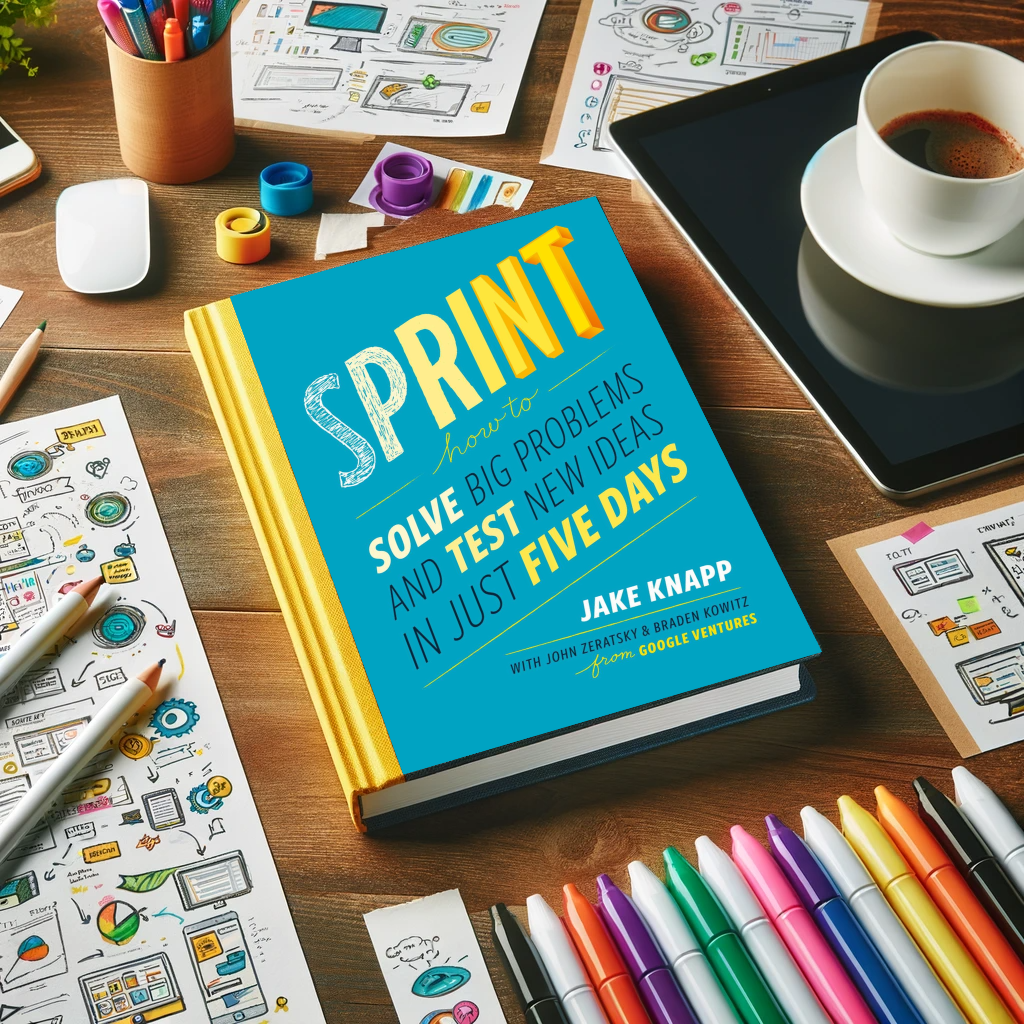Physical Address
304 North Cardinal St.
Dorchester Center, MA 02124
Physical Address
304 North Cardinal St.
Dorchester Center, MA 02124

In the bustling world of UX design, where trends evolve at the speed of technology, one book has emerged as a beacon for professionals seeking to streamline their design process: “The Sprint Book”. This essential read delves into the heart of design sprints, a time-constrained, five-phase process that uses critical thinking, innovation, and user feedback to reduce risks when bringing a new product, service or a feature to the market.

The Genesis of Sprints
Design sprints were conceived at Google from a desire to integrate the user experience (UX) design with the rapid development cycle of agile methodologies. “The Sprint Book” not only chronicles this evolution but also serves as a practical guide. The method’s beauty lies in its simplicity and efficiency, allowing teams to prototype and test ideas within a week.
Frameworks and Flow
At its core, the sprint framework is about focus and speed. The book outlines a day-by-day plan for the sprint week, which is rigorous yet flexible enough to be tailored to different projects. The sprint book advocates for a structured approach to problem-solving without stifling creativity.
The Role of Prototyping
Prototyping is an integral part of the design sprint process. “The Sprint Book” emphasizes that prototypes should be built quickly and be just good enough to elicit useful feedback from users. This approach saves resources and allows for rapid iteration.
Testing and Learning
The final phase of the design sprint, as described in the sprint book, is all about learning from user feedback. This step is critical because it validates the problem-solution fit before any substantial investment in development is made.
Preparing for a Sprint
“The Sprint Book” provides a meticulous checklist for preparation, from choosing the right team to setting up the work environment. The success of a sprint depends on this groundwork, which ensures that the team can focus on the sprint without distractions.
Facilitation Techniques
An effective sprint requires a skilled facilitator. The sprint book dedicates an entire section to facilitation, offering tips and strategies to guide the team through the sprint process efficiently.
Common Pitfalls and How to Avoid Them
No process is without its challenges, and design sprints are no exception. “The Sprint Book” is candid about potential pitfalls and provides sage advice on how to avoid them or pivot when they occur.
Case Studies and Success Stories
Nothing speaks louder than results. The sprint book is replete with case studies that demonstrate the effectiveness of design sprints in various contexts, from startups to established enterprises.
Streamlining the Design Process
The adoption of design sprints has streamlined the design process for many teams. “The Sprint Book” highlights how sprints can cut through the noise and focus on what’s essential, reducing time-to-market and increasing the success rate of new products.
Fostering Collaboration and Innovation
Design sprints foster an environment where cross-functional teams can collaborate and innovate. The sprint book points out that this collaboration is key to uncovering the best ideas and solutions.
Evolving with Technology
As technology evolves, so do design sprints. “The Sprint Book” touches on how sprints are adapting to new technologies and remote work, ensuring that the framework remains relevant and effective.
The Future of Design Sprints
Looking ahead, “The Sprint Book” speculates on the future of design sprints. The methodology’s adaptability suggests that it will continue to be a valuable tool for UX designers and beyond.
“The Sprint Book” is more than just a manual; it’s an inspiration for those in the trenches of UX design, providing a tangible route to innovation and success. As you close the last page, you’re not just ending a chapter on design sprints; you’re beginning a new phase in your professional journey. We invite you to share your experiences with design sprints or how “The Sprint Book” has influenced your work. Leave a comment below and join the conversation with fellow designers who are sprinting towards excellence.
[…] consider enrolling in a reputable design thinking certification program or diving into insightful books on the topic. Embrace the principles of design thinking and unleash your creative potential to […]
[…] and problem-solving skills. The ability to come up with innovative design solutions and alternative options is […]